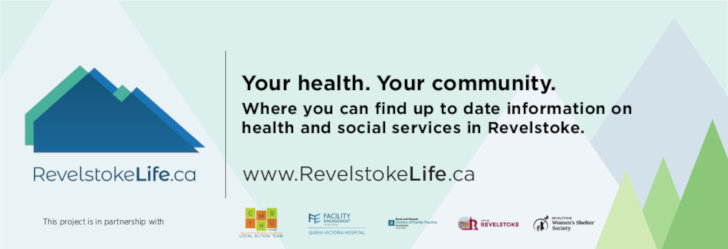Geoff Battersby knows Revelstoke. The retired doctor was instrumental in the creation of the Selkirk Medical Clinic and served Revelstoke in various positions. From the Columbia Shuswap Regional District (CRSD) Director of Area B to city council and several terms as Mayor, Battersby has been involved in helping Revelstoke overcome times of transition. In addition to his leadership in town, Battersby has volunteered locally and globally and, in 2016, was named a Member to the Order of Canada.
When Battersby was the CSRD Area B Director, he was heavily involved in the changing boundaries of Revelstoke’s city limits.
After his time on the CRSD, Battersby ran for council and was elected. He ran for mayor and was elected in 1987 and served two three year terms. Craving a change, he spent 1994 in Nepal working with the University of Calgary project, before coming home in 1996 and serving one more three year term as mayor. All told, he was mayor of Revelstoke for nearly ten years.
The Revelstoke Current reached out to Battersby with a couple of goals in mind. First, to learn about Revelstoke’s past challenges and second to provide advice and ideas to incoming council.
“When my family and I came to town in 1968, Revelstoke was a blue collar place, and there is absolutely nothing wrong with that. The railroad had around 800 employees and was the predominant employer. Additionally, several sawmills were operating,” he says.
The Revelstoke economy was hit hard with the end of the dam construction in 1985.
“We knew it was coming,” Battersby says. “It was still bad. There was 23 to 24 percent unemployment. Almost 400 houses sat on the market, places closed downtown and the population plummeted from 11,000 to 7,500 people.”
Battersby was a part of a group that successfully petitioned the province to fund an economic development strategy in an effort to recover the economy.
“We wanted to retain diversity. We were convinced we should be getting a lot more benefit from the forest industry than we were,” says Battersby. “We wanted to recognize the value of Canadian Pacific Railway and support them. Wanted to development a mountain resort. The downtown revitalization program, was a provincial program and Revelstoke was one of earliest communities to take part. I believed that Revelstoke is still recognized as being one of the best examples of the revitalization program in the province.”
The population stabilized. Battersby credits Revelstoke’s economic development commissioner, Doug Weir, as being able to identifying government programs in which Revelstoke could partake. Ken Magnes was a local mover who got the community on board, especially regarding the Revelstoke Railway Museum. Job retraining and re entry programs were offered. Adult basic education for those who didn’t finish high school, some who never finished elementary but wanted to upgrade, was made available.
“All the economically feasible programs were done and were successful. All of these things gave the community sense of pride and conviction that ‘we can do it,’” he says.
Next came the Revelstoke Railway Museum. “We wanted to benefit from the significance of the railway to the community, so the railway museum came about. It’s been self sustaining from day one,” Battersby says. “Most museums require significant support from the tax base but the railway museum is not of that nature. The railway museum attracted railway buffs, they’d be out on the bridges taking pictures of CP trains coming down the tracks.”
Forestry issues were ultimately tackled by the creation of the Revelstoke Community Forestry Corporation (RCFC). Previously, huge tenures surrounding Revelstoke were managed by large companies run from Castlegar. Revelstoke residents felt as though these companies were remiss in their obligations to the community. When the north block came available, the community objected to another company’s bid. Revelstokians knew they had to develop a new approach.
In the end, the tenure was split 50/50 with a forestry company. Revelstoke obtained the half that was closest to the community. To help fund the purchase, the city borrowed from the electrical utility reserve which had been put in place after the sale of the city’s electrical facility years earlier.
RCFC was established as a fully city owned corporation with a unique financing arrangement whereby Kozak’s Sawmill Ltd, Downie Timber Ltd, and the Jones Brother Shingle Mill financed fifty percent of the purchase.
“We would have preferred the private sector to do it but it wasn’t an option, so it became a community solution,” Battersby says.
“As far as the development of Mount MacKenzie was concerned, we travelled to Telluride, Whistler, Aspen and all sorts of conferences about resorts to get ideas from other places,” explains Battersby. “In fact, the first letters of intent to develop a resort with interested parties occured in 1987. It was a long slow process and when it finally happened, it precipitated a lot of other things. I don’t think we appreciated the degree of infrastructure needs.”
Five years after Battersby finished his last term as mayor, the sign off on an agreement with developers for the mountain was done jointly with the province. Somewhere along the lines, the resort was not required to provide employee housing, something Battersby notes has proven to be a problem for both the city and the resort.
Battersby is concerned about the fractures that seem to be developing the in community. He hopes that the town can pull together.
“When we knew we had a big problem facing us, like 1984 and 1985, the community was united in moving forward to find solutions. We would fill the community center with 500 people to discuss community issues,” he says.
While the challenges may have been different, there is no doubt that Revelstoke has a history of coming together and making the choices that best benefit the town in the long run.



Facebook Comments